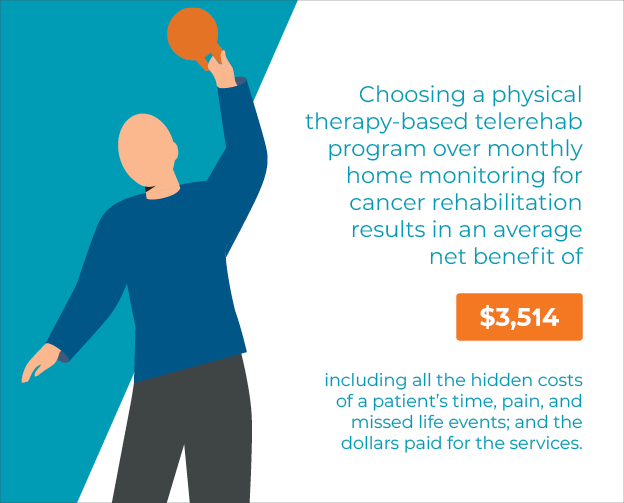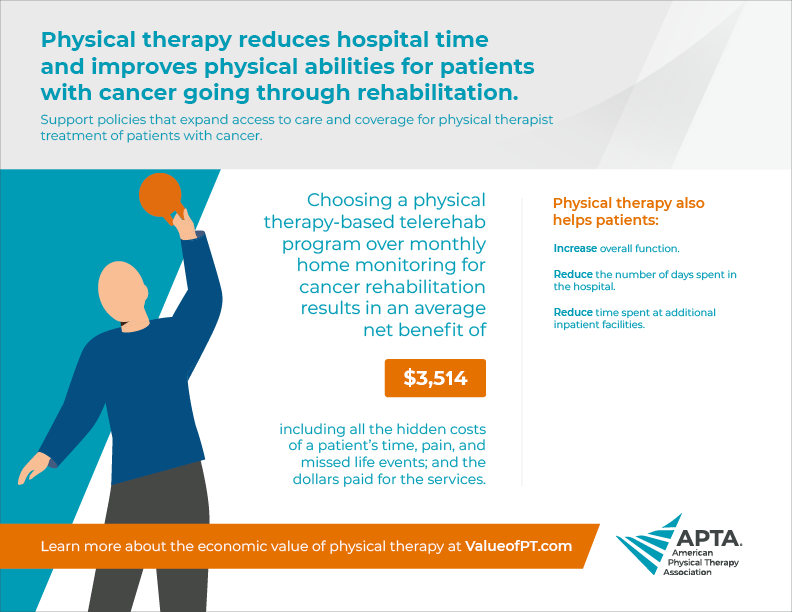Cancer Rehabilitation
Explore this infographic that illustrates how physical therapy helps reduce hospital time and improves physical abilities for patients with cancer going through rehabilitation.
By using this site, you are consenting to our use of cookies. To find out more visit our privacy policy.
A rapidly aging population, along with advancements in cancer treatment and diagnosis, mean that more and more people are recovering from and living with cancer — as well as the long-lasting side effects of cancer and its treatments. Many physical consequences of cancer and its treatment can be effectively treated with physical therapist services and physical rehabilitation programs, given that appropriate exercise is beneficial before, during, and after cancer treatment.
Our independent economic analysis examined the cost-effectiveness of a physical therapy-based cancer telerehabilitation program plus monthly home monitoring compared with monitoring alone*. We discovered that physical therapy reduces hospital time and improves physical abilities for patients with cancer going through rehabilitation.

If you consider the dollar value assigned to the quality-of-life benefits from receiving treatment, minus the payments for services and all the hidden costs of a patient's time, pain, and missed life events; and compare the net result of each treatment, physical therapy comes out ahead by over $3,500.
Physical therapy also helps patients:
Learn more about the economic value of physical therapy.
*The analysis is based primarily on the 2019 study "Cost‐Effectiveness of the Collaborative Care to Preserve Performance in Cancer (COPE) Trial Tele‐rehabilitation Interventions for Patients With Advanced Cancers," by Longacre and colleagues and published in Cancer Medicine.

Explore this infographic that illustrates how physical therapy helps reduce hospital time and improves physical abilities for patients with cancer going through rehabilitation.